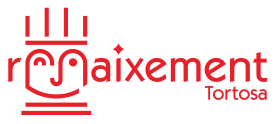LA FESTA
The Trasts
The town of Tortosa is a strategic settlement, a territory coveted and besieged throughout history. The defence of the stronghold, naturally shielded by the Ebro river and its surrounding hills, has been strengthened by town walls since time immemorial. These varied in length as the population grew and the town changed in size and according to the region's need for protection.
In the 16th century, the town's defence was based on Trasts or ranks. This term is used in historical documents to refer to the different sections of the wall that protected the town. There were fifteen sections in all. The same word was also used to describe each of the groups of men or militias assigned to guard the different sections of the wall.
The social strata that the population was divided into played different roles in the town's defence, according to their class: the nobility, honoured citizens and artisans. The town's main families, which bore the most distinguished surnames: Curto, Torrelles, Canyissar de Sebil, Jordà, Sebil, Boteller, Soldevila and Despuig, among others, were in command. Under their orders were the artisans and parishioners in the town's various confraternities, who made up the majority of the militias. The trasts, or ranks, also had an atambor (drummer), two toquadors (trumpet players) and a flag bearing their distinctive colours.
The confraries, or brotherhoods, could be of two kinds: the parochial, or religious, and those started by the guilds. The former brought together the inhabitants of a parish or district and were named after the parish saint. One example was the Confraria de Sant Jaume. The latter were organised by trade: fishermen, tailors, cobblers, wood workers, etc.
The guild confraternities were complex institutions. Because the various trades in the town were not allowed to form guilds, the brotherhoods or religious associations were used as a means of regulating the trades, setting the professional requirements for joining them and the means for quality control of their products. The brotherhoods thus appear to have been religious institutions that structured the social and economic fabric of the town, as well as its defence.
In addition to the fifteen trasts, or ranks mentioned above, the town walls were also protected by a total of four Capitanies de Socors (emergency captaincies): one was the brotherhood of the Temple; another was made up of members of the brotherhoods of woodworkers, silversmiths, and saddle-makers; and the last two were comprised of men from the areas of Xerta, Aldover, la Galera, Godall, El Mas de Barberans, Benifallet, El Perelló, La Fullola and Tivenys. There were also two additional captaincies: one to guard the castle and the other for the artillery.
Thanks to the documents provided by the Regional Historical Archive of Terres de l'Ebre, we were able to recreate the layout of the town and work out the locations of the different defence trasts.




